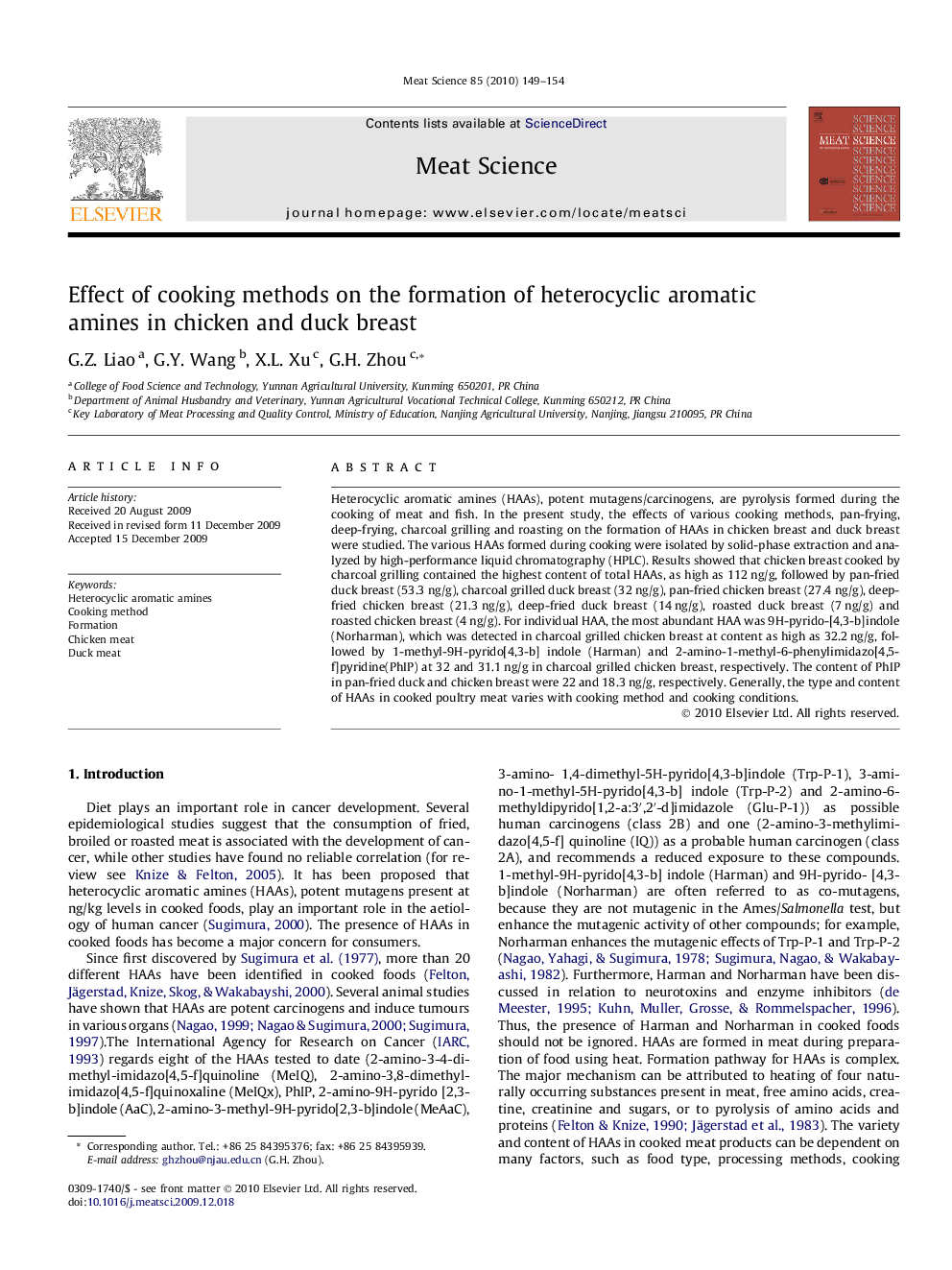| کد مقاله | کد نشریه | سال انتشار | مقاله انگلیسی | نسخه تمام متن |
|---|---|---|---|---|
| 2450887 | 1109664 | 2010 | 6 صفحه PDF | دانلود رایگان |

Heterocyclic aromatic amines (HAAs), potent mutagens/carcinogens, are pyrolysis formed during the cooking of meat and fish. In the present study, the effects of various cooking methods, pan-frying, deep-frying, charcoal grilling and roasting on the formation of HAAs in chicken breast and duck breast were studied. The various HAAs formed during cooking were isolated by solid-phase extraction and analyzed by high-performance liquid chromatography (HPLC). Results showed that chicken breast cooked by charcoal grilling contained the highest content of total HAAs, as high as 112 ng/g, followed by pan-fried duck breast (53.3 ng/g), charcoal grilled duck breast (32 ng/g), pan-fried chicken breast (27.4 ng/g), deep-fried chicken breast (21.3 ng/g), deep-fried duck breast (14 ng/g), roasted duck breast (7 ng/g) and roasted chicken breast (4 ng/g). For individual HAA, the most abundant HAA was 9H-pyrido-[4,3-b]indole (Norharman), which was detected in charcoal grilled chicken breast at content as high as 32.2 ng/g, followed by 1-methyl-9H-pyrido[4,3-b] indole (Harman) and 2-amino-1-methyl-6-phenylimidazo[4,5-f]pyridine(PhIP) at 32 and 31.1 ng/g in charcoal grilled chicken breast, respectively. The content of PhIP in pan-fried duck and chicken breast were 22 and 18.3 ng/g, respectively. Generally, the type and content of HAAs in cooked poultry meat varies with cooking method and cooking conditions.
Journal: Meat Science - Volume 85, Issue 1, May 2010, Pages 149–154